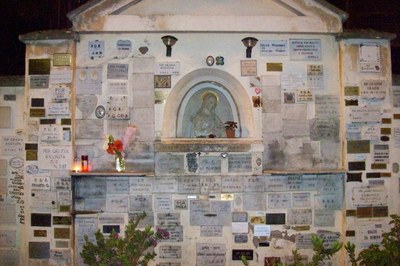Votive tablets in Trastevere
erstellt von
—
last modified
2024-07-01T11:35:49+02:00
Wikimedia Commons, CC BY-SA 4.0
Contributors: Sergio D’Afflitto
Wikimedia Commons, CC BY-SA 4.0
Ex voto on the wall of the former orphanage Madonna degli Orfani in viale Trastevere, Rome, Italy; color photography, 2014, photographer: Sergio D'Afflitto; source: Wikimedia Commons https://commons.wikimedia.org/wiki/File:2014-03-29_Ex_voto_Roma_viale_Trastevere.jpg, Attribution-ShareAlike 4.0 International (CC BY-SA 4.0), https://creativecommons.org/licenses/by-sa/4.0/.


